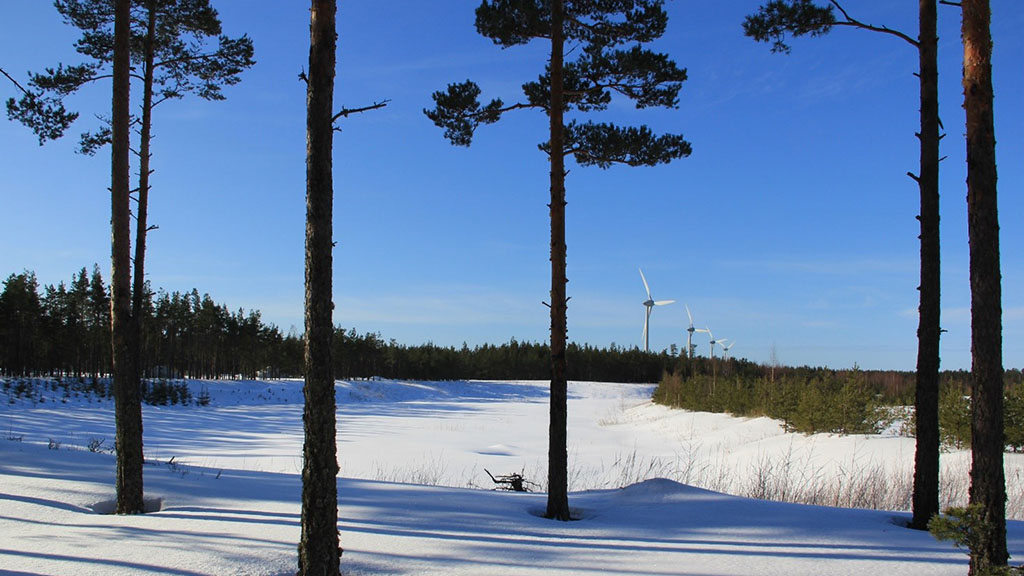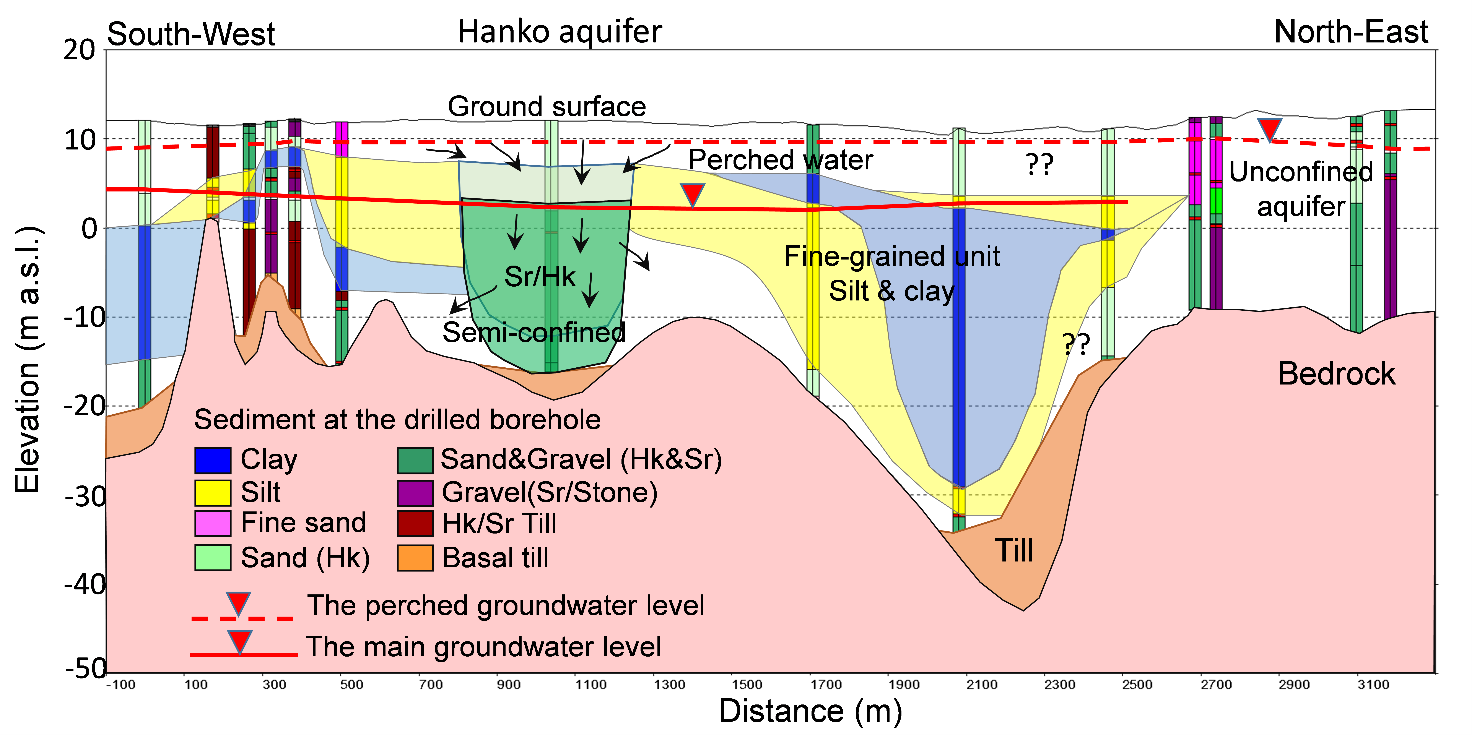Groundwater Resource Management under the “New Normal” of Climate Change – Challenges and Perspectives from Finnish Cases
Groundwater recharge is an essential process in maintaining groundwater levels and groundwater resources. Future climate change, especially changes in temperature and precipitation from both normal and extreme conditions, would influence hydrological systems, groundwater recharge and groundwater resources. The increasing trend for global warming is predicted to continue in the future and is expected to have greater impacts on hydrological systems, resulting in increasing vulnerability of groundwater resources.

In 2010 while the impacts of climate change scenarios on groundwater recharge were simulated for the shallow Quaternary sedimentary aquifer in Hanko, southern Finland, the simulation results indicated that in 2021, only eleven years later, there could be an early snowmelt already in January which is about 3 months earlier than the normal snowmelt period in early April. During that time, it was quite hard to convince people with the results due to a half-meter thick snow cover seen as late as in April.
According to the Finnish Meteorological Institute (FMI, 2023), Finland has entered a new climate normal period of 1991‒2020 which has an average temperature increased by 1.3 °C compared with the 1961‒1990 normal period. However, the observed changes between previous and new climate normal period varies by seasons and regions. For example, in Lahti, southern Finland (Fig. 1), the greatest change in temperature is in the winter period (up to 2.83 °C increase in January), and the smallest is in summer. Similarly, the greatest change in precipitation (rainfall and snowmelt) is in winter (up to 100% increase in February), and the smallest changes are in spring and late summer.

In the Lahti area, under the scenario of RCP 8.5 data, the annual mean temperature is predicted to increase 1.6 and 4.2 ⁰C during 2021‒2050 and 2071‒2100, respectively, compared with the 1981‒2010 conditions. The highest predicted increase in mean temperature is 6.1 ⁰C in winter during 2071‒2100 (Fig. 2). The annual mean snowmelt and rainfall is predicted to increase 26.4% and 60.8% during 2021‒2050 and 2071‒2100, respectively. Due to the highest increase in temperature, the highest increase in snowmelt is found in winter during 2071‒2100.

Variability response of aquifers to climate conditions
Variability of groundwater recharge depends on various factors, including climatic elements (precipitation, temperature, soil frost etc.), soil types, aquifer characteristics, and land cover. The shallow aquifers in Finland are often hydrologically complex with heterogeneous sedimentary units. The groundwater level varies generally between 0 and 14.5 metres below ground surface, with an average of 4.5 metres (Luoma & Ikonen, 2020).
The aquifer with groundwater level close to the surface, such as in Hanko, the variability of groundwater recharge is strongly controlled by the rainfall and snow melt. Under the drought condition, the groundwater abstraction needs to be compromised to avoid depletion and water shortage during high demand of the water supply. Vice versa, during snowmelt and heavy rains, the increasing groundwater level will shorten the percolation time which could lead to deterioration of groundwater quality. Increasing groundwater level contributes more surface leakage and potential flooding in the low-lying aquifer. Moreover, snowmelt and heavy rains can also cause the flooding of the surface water bodies and increase surface water intrusion into the nearby aquifers.
If the vadose zone is thick, as it is in Lahti, groundwater recharge will be smaller and takes longer as the infiltration of precipitation from the soil surface will first fulfil the vadose-zone pore spaces before percolating downward to the groundwater level as a recharge. During drought, the infiltrated water may not be sufficient to fill up all the vadose-zone pore spaces and could cause a declined groundwater level.
Understanding of a groundwater system and the way forward
Climate change adaptation in the water resource management requires comprehensive understanding of aquifer conditions (Fig. 3) and the response of the hydrogeological system to variability of climate parameters (e.g. temperature and precipitation).
The above-mentioned data shows rapid increase of temperature and precipitation variability. Climate change could have serious impacts on groundwater resources and water security if the aquifer characteristic and its response to climate change has not been evaluated adequately.
During the GTK`s (Geological Survey of Finland) HYGLO project, various approaches have been developed to identify the best practices to climate change adaptation and mitigation. These include enhancements of the techniques for 3D geological and groundwater flow modelling, application of recharge estimation methods, understanding and modelling the groundwater surface water interactions such as bank infiltration, and hydrogeological monitoring. Successful adaptation to climate change depends on how much we are able to recognise the variability in climatic variables and most importantly, the responses of our aquifer systems to them.

References
Luoma, S., Eskelinen, A., Jarva, J., Okkonen, J. 2022. Groundwater flow modelling for an assessment of climate change impacts on groundwater recharge at the Lahti aquifer, southern Finland. GTK Open File Work Report for the RAINMAN project. Read the report
Luoma, S., Okkonen, J. 2014. Impacts of Future Climate Change and Baltic Sea Level Rise on Groundwater Recharge, Groundwater Levels, and Surface Leakage in the Hanko Aquifer in Southern Finland. Water, 6 (12), 3671-3700. Read the article
Luoma, S., Ikonen, J. 2020. Vulnerability assessment of the shallow groundwater in Finland. GTK Open File Work Report. Read the report
Luoma, S. 2018. Geological model of the Hanko aquifer. Investigation report-94/2018. Geological Survey of Finland. Read the report
Luoma, S. 2018. Groundwater flow models of the shallow aquifer in Hanko. Investigation report 95/2018. Geological Survey of Finland. Read the report
FMI. 2023. New climate normal period 1991-2020 is taken into use – Press release 30.9.2021. Read the press release
Text
Samrit Luoma, Senior Scientist
Water Management Solutions, Geological Survey of Finland GTK
